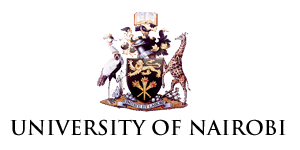UoN leads the Commemoration of World Antimicrobial Awareness Week 2025
The World Antimicrobial Resistance Awareness Week (WAAW) 2025 and the Kenya National AMR Scientific Symposium were officially launched in Nairobi on 18th November 2025. The launch marked the commencement of a three-day national convening focused on strengthening the country’s response to antimicrobial resistance (AMR). Specialists and experts from different fields including government representatives have come together in partnership with international stakeholders under the theme “Act Now: Protect Our Present, Secure Our Future.”
The opening session highlighted the growing threat of AMR to public health, its major effects to food production systems and national development. Speakers touched on the status of Kenya and its commitment in regards to a One Health approach, which brings together human, animal, and environmental health sectors in addressing the drivers and impacts of antimicrobial resistance. They called for a collective effort to have a coordinated governance, improved surveillance systems, strengthened antimicrobial stewardship and sustained investment in research and also proper investment in innovation and capacity building.
The University of Nairobi was highlighted as a central technical partner in Kenya’s AMR surveillance. UoN contributed to the program by bringing specialized knowledge in medicine and clinical care, pharmacy, microbiology and epidemiology which were essential in strengthening the quality of surveillance activities. Dr. Morris Buliva, a representative of Fleming Fund noted that the University of Nairobi served as a sub-grantee of the fund but later assumed a role in the human health component, overseeing laboratory capacity building, diagnostic stewardship, antimicrobial consumption studies, and facility-level data generation.
In his remarks, Dr. Morris Buliva presented the highlights of the Fleming Fund’s work in Kenya where the University of Nairobi is a beneficiary. He noted that, significant improvements were made in the human health sector specifically in diagnostics, stewardship, laboratory refurbishment, data quality, and surveillance capacity. He also noted that, the availability of resistant pathogens in humans, animals and the environment poses serious threats to public and animal health. To combat this challenge, he commended the government for supporting the building of necessary systems and structures and also human capacity necessary to detect and understand these threats. He highlighted this process as a reflection of years of dedication and collaboration across one health sectors.
Dr. Loice Ombajo, Co-Founder & Team Lead , Centre for Epidemiological Modelling and Analysis (CEMA) at the University of Nairobi, represented the AMR policy brief. Inappropriate antibiotic use drives resistance, and overuse of antibiotics both in the community and in hospitals is associated with increased antimicrobial resistance as per the brief.
She noted that, “6 out of 10 people with a resistant bacterial bloodstream infection in Kenya will die. The World Health Organization indicated that AMR is a global health priority and it is considered one of the leading public health threats of this century. Africa has the highest mortality rate from AMR infections in the world with 27.3 deaths per 100,000 attributed to AMR.
Dr. Ombajo noted that, the University of Nairobi (Department of Clinical Medicine and Therapeutics and Center for Epidemiological Modelling and Analysis [CEMA] working together with the National Antimicrobial Stewardship Interagency Committee [NASIC], undertook to improve surveillance of AMR and support antimicrobial stewardship in various health facilities in Kenya. The surveillance was supported by the Fleming Fund Country Grant to Kenya.
From the surveillance, the team found that, the most common bacteria isolated from blood were Escherichia coli, Klebsiella pneumoniae, and Staphylococcus aureus. The surveillance also showed high consumption of azithromycin which was a practice that was carried on from the COVID 19 pandemic period. There was a high consumption of ceftriaxone, a product linked to what is available at KEMSA and healthcare facilities which has been an indicator that drives high use of the drug.
The global recommendation is that 70% of antibiotics used should be in the ACCESS category. Use Of antibiotics in the WATCH category is associated with more resistance. The policy brief show that Ceftriaxone is the most used antibiotic is the Kenyan hospitals.
The policy brief recommends that; relevant authority which is the ministry of health should, undertake initiatives to improve public awareness on the dangers of self-medication with antibiotics, PPB should enforce regulations on over-the-counter antibiotic purchase as per CAP 244 of the laws of Kenya, Antibiotic quantification and procurement by KEMSA should align with national AMR surveillance data and national antibiotic use guidelines. The government should also earmark funding for AMR surveillance and containment by embedding this in Medium-Term Expenditure Framework.
Collectively, the Heads of Departments including CECs and researchers called for the urgency of sustained national collaboration to safeguard the effectiveness of antimicrobials and protect public health and importantly secure a long-term resilience in health and food systems.

